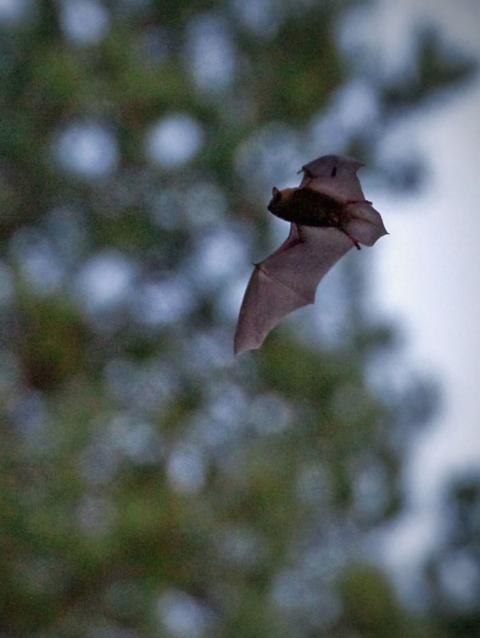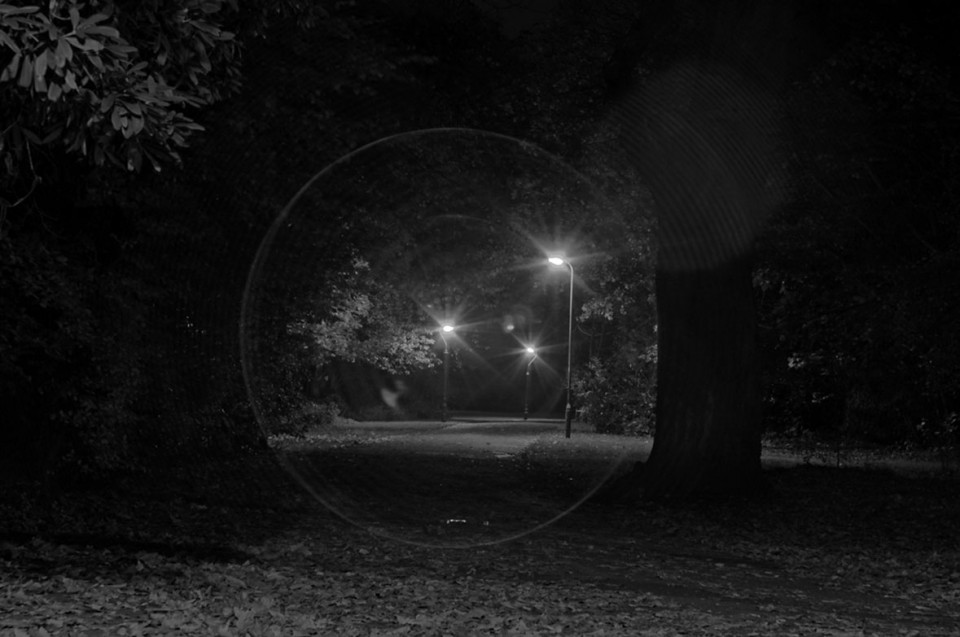Bats - Activity
By and large, bats are well known to be “creatures of the night” and, although a handful of species such as the Old World fruit bats venture out during the daytime, most species are indeed nocturnal. Often, seeing bats out during the daytime is a bad sign, suggesting they’ve been having trouble finding food at night or their roost site has been disturbed. Around dusk, most species can be seen repeatedly darting in and out of their daytime roosts - this is a behaviour called light sampling, and is how the bats establish whether it is dark enough to leave on foraging trips.

Pipistrelles are probably active for the longest period of any British bat: from March through to the end of October or November. Most British bats have a somewhat narrower activity span, generally emerging from hibernation at the end of April or beginning of May. Time spent foraging for insects and other prey varies from species to species and according to season. Greater horseshoe bats (Rhinolophus ferrumequinum), for example, feed intermittently throughout the night from May to August, staying away from their roosts all night from late August. Conversely, common pipistrelles (P. pipistrellus) spend much of the night foraging for insects during May and June, returning to their roosts between midnight and daybreak. Pipistrelles then appear to adopt a bifurcated feeding activity pattern from June to August whereby they have a peak just after sunset and another before dawn; intermittent feeding may pervade such peaks.
Frequently, feeding duration is affected by weather conditions and there will usually be a premature truncation of feeding on colder nights, with bats returning to their roosts earlier because there’s less prey around. The time taken to emerge from a roost also varies according to species. In their Field Guide to Mammals of Britain and Europe, David Macdonald and Priscilla Barrett give summer emergence times for the common pipistrelle, Daubenton’s bat (Myotis daubentonii), greater horseshoe bat and natterer’s bat (M. nattereri) as 20, 30, 50 and 60 minutes after sunset, respectively. Nocturnal activity in fruit bats tends to begin about 30 minutes after sundown. Many bat species will also occupy ‘night roosts’ to provide some shelter and security between nocturnal feeding bouts. In certain species, these night roosts may also be used as a sort of banquet hall with the bats bringing their quarry back to the temporary roost in order to consume it; this seems to be especially true of fruit bats.
Bat activity is often also related to various topographic and barometric influences. In his 1995 paper in the journal Functional Ecology, Ken Paige at the Institute for Environmental Studies at the University of Illinois reported that some bats could detect changes in barometric pressure -- in other words, they are able to sense the changes in atmospheric pressure usually associated with changes in weather conditions -- and use this information to decide if it is worth the time and effort to go out looking for food. Paige found that more bats emerged from their roost during nights when barometric pressures decreased, a meteorological sign of impending rain. Indeed, barometric pressure accounted for some 87% of changes in bat activity. It seems that bats can detect variations in atmospheric pressure using their Vitali organ, which is a receptor in their middle ear.
The Vitali (or paratympanic) organ is also found in the ears of birds, which are also believed to use it to detect changes in atmospheric pressure. This organ has recently been demonstrated in alligators by Chris von Bartheld and a colleague at the University of Nevada, Reno, although it appears that bats are the only mammals known to possess a true paratympanic organ (some mammals possess a very primitive organ which may contribute the same function). The advantage of such a sense is that the bats can determine the likelihood of insects being abundant and thus whether it is worth expending the energy to leave the roost and hunt for them. Up to a point, insects tend to be more numerous during low-pressure weather systems; pressures of around 960 mm Hg, however, signify heavy rain and this will suppress insect activity and can impede echolocation. Ergo, if barometric pressure is too low, the bats can decide to stay in the roost and not expend precious energy looking for prey that is likely to be scarce.

Bat activity can also be related to celestial factors, specifically moonlight. In a fascinating paper in the journal Current Science back in 2002, Ganapathy Marimuthu and a colleague at the Madurai Kamaraj University in India, report on the effect of the lunar eclipse of 9th January 2001 on the foraging activity of short-nosed fruit bats (Cynopterus sphinx) in a black grape (Vitis vinifera) orchard in southern India’s Cumbum Valley. Marimuthu and Singaravelan observed a three-fold increase in bat visits to the orchard during the eclipse, which lasted from 12.30 until about 03.15, compared to the days before and after. The researchers suggest that this suppression of foraging activity by bats on brightly moonlit nights is an adaptation to avoid nocturnal predators. During their study, Marimuthu and Singaravelan observed a barn owl (Tyto alba) and a great horned owl (Bubo bubo), both bat predators, perching in trees in the vicinity of the orchard, although no interaction between the birds and bats was witnessed.
In their 1999 paper, Scott Grindal, Joe Morisette and Mark Bringham at the University of Regina in Canada, found that the activity of bats in British Columbia tended to be higher at lower elevations. Indeed, bat activity was as much as 40-times higher in river habitat than in upland areas of the same forest. Grindal and his colleagues looked at bat activity at three different elevations in a forested area of British Columbia during the summers of 1993, 1994 and 1995. Not only did they encounter more bats in the lowland riparian (river) habitats, they also observed a sex bias in the captured bats: more female bats were caught in lowland regions, whilst males were more frequently encountered at higher elevations.

The scientists put this increased activity at lower altitudes down to river habitats supporting a more prolific source of food; it was also suggested that bats may use rivers as a source of drinking water. Females, the authors suggest, may preferentially seek-out river habitats because of the abundance of insect prey they support, which may be particularly important during pregnancy and lactation. Males, on the other hand, may opt for higher altitudes (and colder temperatures) to conserve energy.
A similar study, published in 2003 by Janet Erickson and Michael Adams at the University of Washington, found a four-fold increase in bat activity at low elevations compared to high elevation sites in the Capitol State Forest of western Washington. Moreover, the biologists found that feeding activity was 20-times greater at lower than at higher elevations. Intriguingly, this scenario doesn’t seem to hold true for all bat species. Erickson and Adams found that the non-Myotis group of bats (i.e. those that weren’t mouse-eared bats) showed no significant variation in activity at the different altitudes. The authors suggest that such differences may be a result of differences in insect availability, climatic conditions and morphology (bat “design”) of the bat species.
Finally, a fascinating paper by Bristol University Ph.D. student Lait Wickramasinghe in the Journal of Applied Ecology during 2003 found that bats seemed to prefer organic farms over conventional ones. Organic farms are those that largely exclude the use of man-made fertilizers, pesticides, growth regulators and animal feed additives. Wickramasinghe and his supervisors compared the activity and species richness (i.e. the number of different bat species) on 24 matched pairs of organic and non-organic farms during 2000 and 2002, reporting that bat activity was 61% higher on the organic farms, especially over areas of water. The biologists also found that 14 of our 16 native bat species were found on the organic farm while only 11 were encountered on the conventional farms.
It should be noted that a difference of only three species is not, statistically speaking, a reason to conclude that organic farms are better for bats than conventional ones. It does, however, provide an insight into how we might help promote bat populations and perhaps reverse the declines that many British populations have undergone in recent years. In particular, one of the main reasons for the observed preference of organic farms may lie in the hedgerows. Bats use walls, hedgerows and woodland edges as flight paths, because they provide shelter for aggregations of insects. Indeed, the Bristol researchers found that hedgerow height affected the number of feeding “buzzes”, with more buzzes along higher hedges.